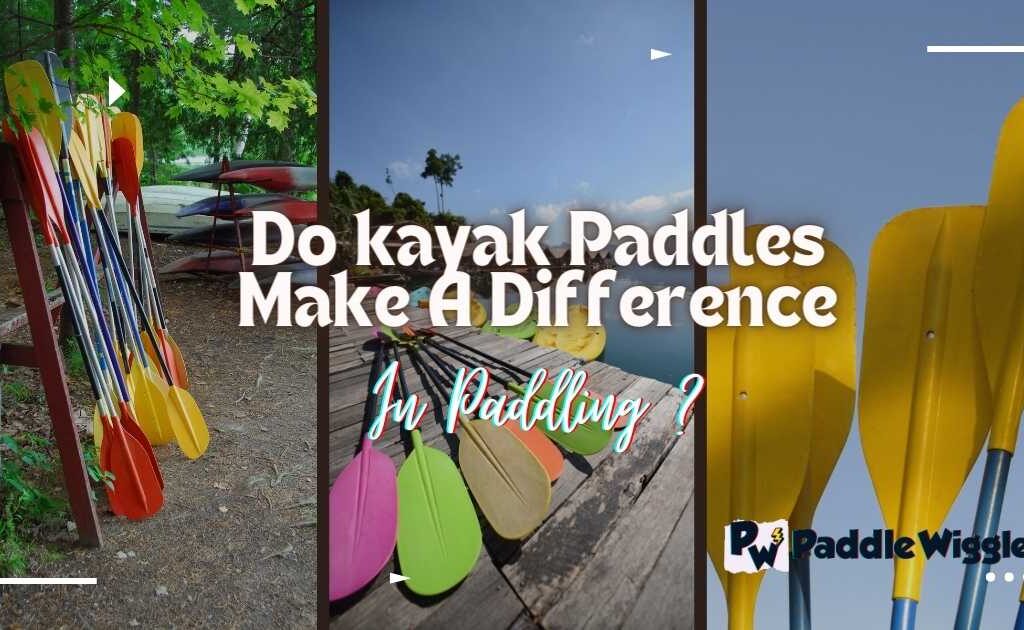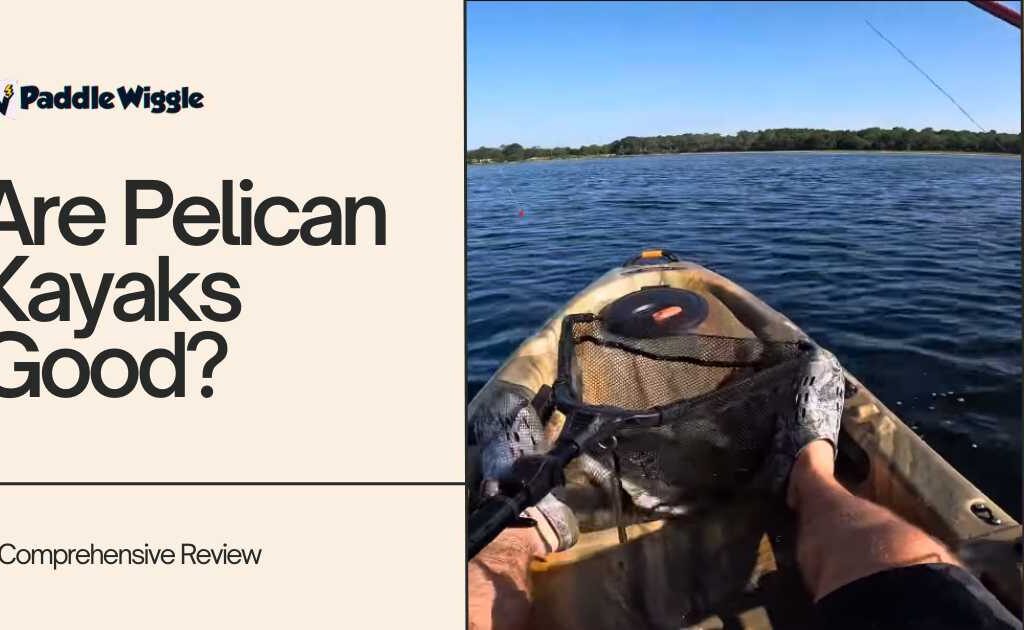Choosing the right kayak paddle can make a big difference in how you perform on the water. There are two main types: high-angle and low-angle paddles, each suited for different styles of kayaking.
High-angle paddles are great for quick and dynamic paddling, while low-angle paddles are better for leisurely cruising and longer trips. The way the paddle is shaped, the shaft design, and your paddling technique all matter when deciding which one is best for you.
What’s interesting is that using the right paddle angle can improve your efficiency and reduce fatigue by up to 30%.
Ronin D. Sullivan [@ronin]
In this guide, we’ll break down the key differences between high and low-angle kayak paddles and help you choose the one that suits your kayaking style best. Let’s dive in and decide which one is best for your kayaking adventures!
Contents
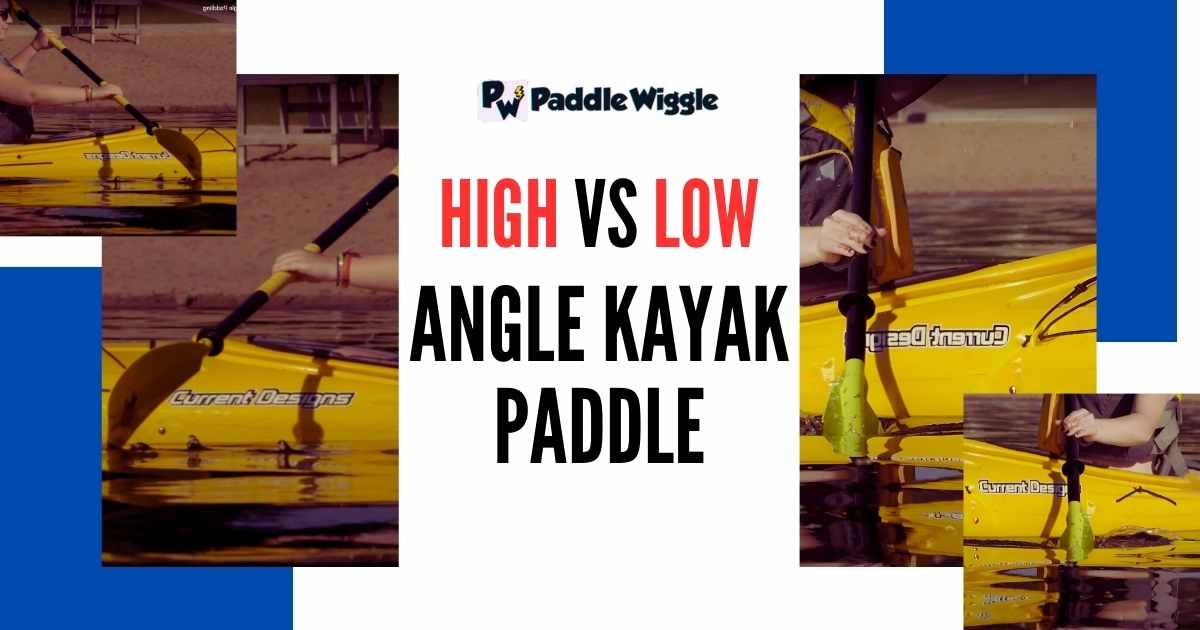

Understanding Kayak Paddles: High Angle And Low Angle
In the world of kayaking, there are different paddling styles that determine how you maneuver your kayak. Two common styles are high-angle and low-angle paddling. Let’s take a closer look at each style and what sets them apart.
Definition And Basic Characteristics Of High-Angle Kayak Paddles


High-angle paddling is a special way that skilled kayakers paddle. Instead of having the paddle flat on the water, they hold it more upright so it goes into the water at a steeper angle. They do this in rough or fast water, such as whitewater, to go quickly and turn their kayak fast. It’s a strong and powerful way to paddle.
Advantages:
- Provides better control in challenging conditions.
- Offers quicker acceleration and maneuverability.
- Allows for stronger strokes, making it easier to paddle against currents or winds.
Downsides:
- Requires more energy expenditure due to the increased effort required for each stroke.
- It may cause more strain on the shoulders and upper body muscles.
Kayak paddles with a high-angle style are usually shorter than the low-angle ones. They also have wider blades with a kind of ridge down the middle, which helps you stay steady when you’re making strong strokes in the water.
Basic Characteristics Of Low-Angle Kayak Paddles
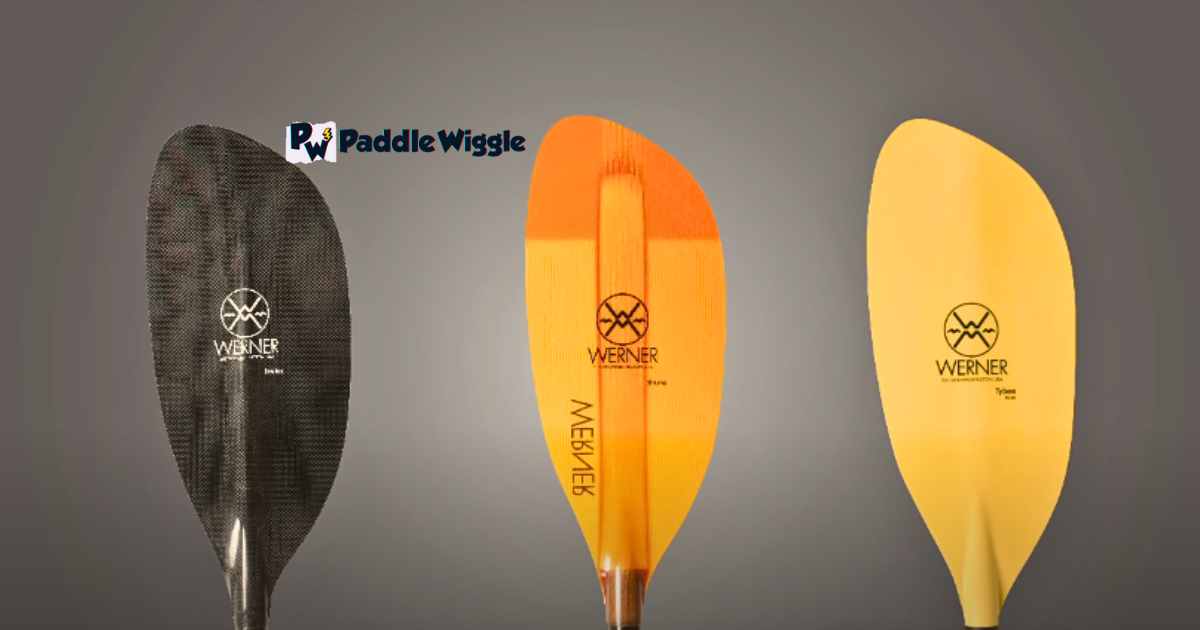

Low-angle paddling is a chill and smart way of kayaking that many casual kayakers use. It means you don’t have to work as hard. You hold your paddle flatter on the water so it goes in at a gentler angle. People like to use this style when they’re on long kayaking trips or in calm water, where they want to conserve energy and paddle efficiently.
Advantages:
- Provides better efficiency over long distances, requiring less energy expenditure per stroke.
- Reduces strain on muscles, making it suitable for extended periods of paddling.
- Offers greater stability due to wider blade shapes.
Downsides:
- It is not as effective in challenging conditions where quick acceleration and maneuverability are required.
- It may result in less power during strokes, making it harder to paddle against strong currents or winds.
Low-angle kayak paddles typically have longer lengths compared to high-angle paddles. They feature narrower blades with a more flat dihedral shape, allowing for smoother and quieter strokes through the water.
Different Blade Shapes And Sizes Used In Each Type Of Paddle
The blade shape and size play a crucial role in determining the performance of a kayak paddle. High-angle paddles have big blades that give you a lot of power in the water, but you have to work harder to use them. On the other hand, low-angle paddles have smaller blades that are easier to use and are great for paddling longer distances with less effort.
How Grip Position Varies Between High Angle And Low Angle Paddling
The grip position on the kayak paddle also differs between high-angle and low-angle styles.
Target Users Of High-Angle Kayak Paddles
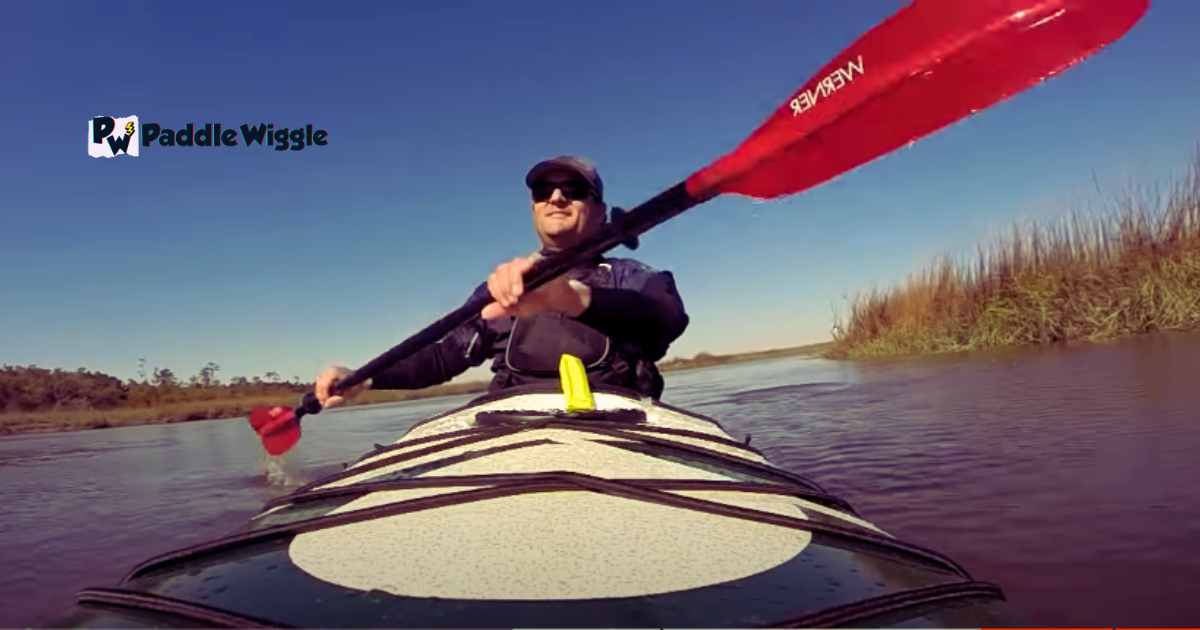

Kayaking is a thrilling water sport where you can have an adventure and discover nature. Picking the right paddle can really change how much you enjoy your time on the water.
Identifying The Target Users Who Prefer High-Angle Kayak Paddles
High-angle kayak paddles are made for kayakers who like to paddle with a strong and forceful technique. These kayakers usually use shorter strokes and paddle faster. They tend to be more experienced and skilled in maneuvering their kayaks efficiently.
High-Angle Vs Low Angle In Terms Of Paddler’s Skill Level
High-angle paddlers are usually more experienced kayakers than low-angle paddlers. Some kayakers have learned fancy moves like bracing, rolling, and edging. These skills help them manage difficult waters. On the flip side, low-angle paddlers might be new to kayaking or simply prefer a smooth and steady ride over going really fast.
Advantages That High Angle Paddles Offer To Specific Types Of Kayakers
- Speed: High-angle paddle strokes give kayakers more power, allowing them to go faster. This is great for people who are racing or going on long kayaking trips and want to be efficient.
- Maneuverability: High-angle paddlers use shorter strokes that help them steer the kayak more precisely. This makes it easier to go around sharp turns or objects in the water.
- Freestyle Kayaking: High-angle techniques are often used by freestyle kayakers who do cool tricks and stunts in fast, bumpy rivers.
Differences In Techniques Between High And Low Angles
The primary difference between high and low-angle paddling techniques lies in the angle at which the paddle enters the water. High-angle paddlers have a more vertical stroke, with the blade entering the water at a higher angle. This allows them to maximize power and efficiency. In contrast, low-angle paddlers have a more horizontal stroke, with the blade entering the water at a lower angle. This style emphasizes comfort and endurance over speed.
In summary, high-angle kayak paddles are liked by experienced kayakers who want to go fast, be nimble, and use advanced techniques. They give you more speed and control, but you need to be really skilled to use them well. On the flip side, low-angle paddles are better for beginners or folks who want a comfy and stable kayaking experience.
Target Users Of Low-Angle Kayak Paddles
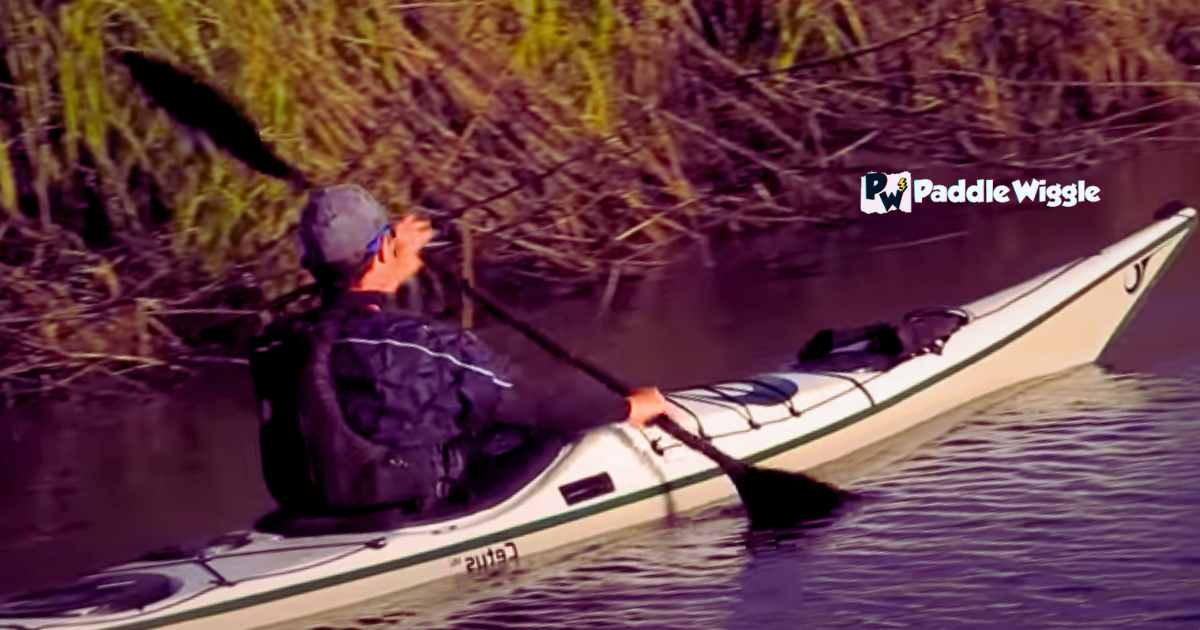

In the world of kayaking, there are two main types of paddling techniques: low angle and high angle. Each technique has its own set of target users and preferred activities. Let’s take a closer look at the target users who prefer low-angle kayak paddles and compare them to high-angle paddlers.
Identifying The Target Users Who Prefer Low Angle Kayak Paddles
Low-angle kayak paddles are the go-to choice for people who want a laid-back and easy time on the water. They’re usually into relaxed kayaking, long trips, or expeditions where being able to paddle for a while is important. They value efficiency, comfort, and stability in their paddling technique.
Low Angle Vs High-Angle Comparison Based On Different Kayaking Activities
While low-angle paddlers focus on recreational activities, high-angle paddlers tend to lean towards more dynamic and performance-driven pursuits. High-angle paddle users often participate in activities such as whitewater kayaking or sea kayaking with strong currents or waves. They seek speed, control, and maneuverability while navigating challenging waters.
Advantages Of Low-Angle Paddles
Low-angle kayak paddles have distinct advantages that cater to the needs of certain types of kayakers:
- Recreational Kayakers: If you like paddling on quiet lakes or slow rivers just for a relaxing time, low-angle paddling is great. It’s a comfy way to paddle without putting too much stress on your body.
- Touring Enthusiasts: High-angle paddlers make their kayak go faster by taking shorter and more powerful strokes. They do this by using their paddle’s blade to catch the water better with each stroke. This means they can go a long way without getting tired too fast.
- Beginners: Beginner kayakers prefer the low-angle technique because it’s more relaxed and helps prevent getting too tired. It’s easier to learn.
Differences In Techniques Between Low And High Angles
The main difference between a low angle and a high-angle paddling is how you hold the paddle. In low-angle paddling, the paddle is more horizontal, which makes for a calm stroke. In high-angle paddling, the paddle is more upright, which gives you more power and lets you turn fast.
Here are some key differences in techniques:
- Low Angle Paddling: This technique emphasizes longer, smoother strokes with less effort. The paddle enters and exits the water at a shallower angle.
- High-Angle Paddling: With shorter and more aggressive strokes, high-angle paddlers generate greater propulsion by maximizing their blade’s catch on each stroke.
Ins And Outs Of High-Angle Kayak Paddles
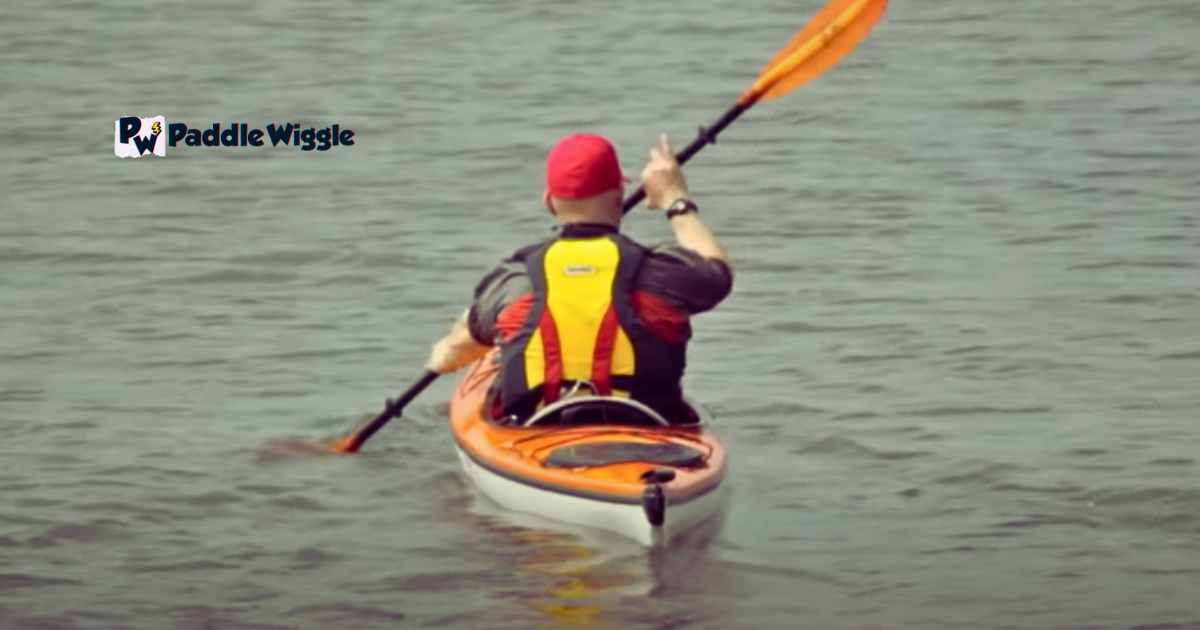

Skilled kayakers prefer high-angle paddles because they give more power and efficiency in the water. These paddles are not the same as low-angle ones and are better for certain types of kayaking trips.
Characteristics Of High-Angle Kayak Paddles
High-angle kayak paddles are designed with certain features that make them distinct from low-angle paddles:
- Blade Shape: High-angle paddles usually have shorter and wider blades than low-angle paddles. This shape helps you paddle with more power because it covers a larger area in the water.
- Shaft Angle: The shaft of a high-angle paddle is positioned at a steeper angle relative to the water’s surface. This angle allows for a more vertical stroke, generating greater power output.
- Upper Hand Position: When using a high-angle paddle, the upper hand is positioned higher on the shaft compared to a low-angle paddle. This position optimizes leverage and control during each stroke.
Advantages Of High-Angle Kayak Paddles
Using a high-angle paddle offers several advantages for kayakers seeking increased power and efficiency:
- Increased Power Output: The combination of blade shape, shaft angle, and upper hand position in high-angle paddling enables kayakers to generate more power with each stroke.
- Higher Stroke Rate: High-angle paddles are set up in a way that lets kayakers paddle faster compared to low-angle techniques.
- Ideal For Whitewater Or Surf Conditions: High-angle paddling gives you more power, which is great for going through rapids or riding waves when you’re kayaking in the surf.
- Suitable For Shorter Trips Or Races: High-angle paddling is the best option for quick trips and races when you need to be fast because it’s efficient and powerful.
Downsides Of High-Angle Kayak Paddles
While high-angle paddles offer numerous advantages, there are some downsides to consider:
- Increased Fatigue: Using high-angle paddling, which creates stronger strokes, can make you more tired on longer trips or races.
- Less Efficient For Touring: When you’re going on longer kayaking trips, it’s a good idea to use low-angle paddles. They’re better because they need less effort, and you can keep paddling at a steady speed for a long time without getting too tired.
When To Use A High-Angle Paddle?
Determining when to use a high-angle paddle depends on various factors, including water conditions and personal preference. Consider the following guidelines:
- Water Conditions: High-angle paddles are good for rough waters, such as fast rivers or whitewater rapids.
Ins And Outs Of Low-Angle Kayak Paddles
Low-angle kayak paddles offer a unique set of characteristics and benefits that cater to a specific style of kayaking. These paddles offer efficiency, stability, and reduced fatigue. Understanding their characteristics and knowing when to use them can enhance your kayaking experience, especially for leisurely outings and extended trips.
Let’s dive deeper!
Characteristics Of Low-Angle Kayak Paddles
A low-angle kayak paddle is designed with certain features that distinguish it from other types of paddles. Here are some key characteristics to consider:
- Paddle Shaft Length: Low-angle paddles typically have longer shafts compared to high-angle paddles. This allows for a more relaxed grip and stroke technique.
- Blade Shape: The blades of low-angle paddles are usually longer and narrower than those of high-angle paddles. This shape reduces the resistance in the water, resulting in improved efficiency.
- Blade Angle: The blade angle on a low-angle paddle is less aggressive than that of a high-angle paddle. This angle promotes a smoother stroke with less strain on the body.
Advantages Of Low-Angle Kayak Paddles
Using a low-angle paddle offers several advantages for kayakers:
- Improved Efficiency: Low-angle paddles have longer, slimmer blades and a more easygoing way of paddling. This combination helps you move smoothly through the water with less effort. This can help you cover more distance with less effort.
- Reduced Strain On the Body: A low blade angle and a longer shaft make it easier to paddle without stressing your wrists, shoulders, and back. This can help prevent fatigue during long paddling sessions.
- Better Tracking: Low-angle paddles are good at helping your kayak go straight on calm water because of how they’re designed. This means you won’t have to make a lot of adjustments to keep your kayak on course.
Downsides Of Low-Angle Kayak Paddles
While low-angle paddles have their advantages, they also come with some downsides to consider:
- Less Power Output: Compared to high-angle paddles, low-angle paddles provide less power output. This may be better for situations that require more than quick acceleration or maneuverability.
- Limited Suitability for Rough Conditions: Low-angle paddles work well in calm or flat water. However, in rough or choppy water, you might need more power and control to paddle effectively.
When To Use A Low-Angle Kayak Paddle
Knowing when to use a low-angle paddle can enhance your kayaking experience. Here are some factors to consider:
- Water Conditions: Low-angle paddles are well-suited for calm lakes, slow-moving rivers, and coastal areas with minimal waves or currents. They allow for efficient cruising and relaxed exploration in these types of conditions.
Comparing High-Angle And Low-Angle Paddling Styles: Who Benefits From Which?
When it comes to kayaking, there are different paddling styles that can be used depending on the individual’s preferences and needs. Two common styles are high-angle and low-angle paddling. High-angle paddling is strong and powerful. The paddle goes into the water at a steep angle. Low-angle paddling is relaxed and efficient, with the paddle going into the water at a more shallow angle.
In order to determine which style is best for you, it’s important to understand the benefits of each.
Let’s dive in and explore which style might be better suited for different types of kayakers.
Paddling Techniques: High Angle And Low Angle
High-angle paddling involves a more aggressive stroke, with the paddle entering the water at a steeper angle. This technique is often used by whitewater kayakers or those who prefer a faster pace. In contrast, low-angle paddling is more easygoing. The paddle goes into the water at a less steep angle. People who prefer efficiency and lasting power often use this style, especially recreational kayakers.
When To Choose A High-Angle Kayak Paddle
If you like kayaking in fast, rough water like in rapids, you should use high-angle paddles. They’re made to give you strong and fast strokes, which help a lot when you’re steering through turbulent water and dealing with obstacles. A high-angle paddle gives you the agility to handle those tough rapids.
Surf Kayaking: Catching and riding waves requires responsiveness and quick changes in direction. That’s where high-angle paddles shine. Their design allows for swift maneuverability, making it easier for surf kayakers to catch those thrilling waves and ride them like pros.
Short Sprints and Racing: Are you a fan of short-distance racing or sprinting events? If so, a high-angle paddle should be your weapon of choice. These paddles offer a burst of speed that can give you an edge over your competitors. Their power and efficiency will help propel you forward with every stroke.
Aggressive Paddling Styles: If you like to paddle with powerful and forceful strokes, then a high-angle paddle is the right choice for you. Its design maximizes power output and speed, allowing you to make the most out of each stroke. Whether you’re pushing through rough waters or trying to keep up with the pack, a high-angle paddle will help you stay ahead.
High-Intensity Workouts: Looking for a more intense upper body workout on the water? High-angle paddles can provide just that. High-angle paddles have more resistance than low-angle ones, so they make your muscles work harder with each stroke. If you want a physical challenge while kayaking, go for a high-angle paddle.
When To Choose A Low-Angle Kayak Paddle
Touring and Long-Distance Kayaking: If you’re going on a long kayak trip, use a low-angle paddle. They are made for a comfortable and efficient way of paddling that saves your energy on long journeys. So whether you’re exploring peaceful lakes or slow rivers, a low-angle paddle will give you the comfort and ease you need during those long hours on the water.
Recreational Paddling: If you just want to relax and have a leisurely time kayaking without going too fast or working hard, use a low-angle paddle. They make paddling comfy and easy so that you can enjoy the beauty around you at your own speed. Whether you’re on calm coastal waters or gentle streams, a low-angle paddle will make your recreational kayaking trips even better.
Sea Kayaking: If you’re a sea kayaker and want to paddle in open water, low-angle paddles are often the best. They are great for long trips in different conditions. These paddles have smooth and controlled strokes, which help sea kayakers move through waves and currents with stability and control.
Photography And Observation: If you like taking amazing photos or watching wildlife while kayaking, using a low-angle paddle is a good idea. These paddles let you paddle quietly and smoothly so you can stay stable and in control when you get close to things you want to see. This way, you can take great pictures or watch wildlife without scaring them away.
Reducing Fatigue: A big plus of using a low-angle kayak paddle is that it helps you stay less tired during long paddling trips. Low-angle paddling is not as hard on your body, so it’s good for beginners or people who might not have super strong upper bodies. If you pick a low-angle paddle, you can have longer and more comfy kayaking journeys without getting too tired too soon.
So, High Angle Vs Low Angle Which Kayak Paddle Is Right For You?
Choosing the right kayak paddle is crucial for an enjoyable kayaking experience. One of the key decisions you’ll need to make is whether to go for a high angle or low angle paddle. But how do you decide?
Let’s dive into the factors you should consider when choosing between these two options.
| Aspect | High-Angle Paddle | Low-Angle Paddle |
|---|---|---|
| Paddle Angle | High (closer to vertical) | Low (more horizontal) |
| Paddle Blade Shape | Short and wide blades | Long and narrow blades |
| Paddle Strokes | Powerful and aggressive | Efficient and relaxed |
| Ideal for Whitewater Kayaking | Yes | Less Common |
| Ideal for Touring/Sea Kayaking | Less Common | Yes |
| Ideal for Surf Kayaking | Yes | Less Common |
| Short-Distance Racing | Ideal | Less Common |
| Long-Distance Kayaking | Less Ideal | Ideal |
| Recreational Paddling | Less Comfortable | Comfortable |
| Responsiveness | High | Moderate to High |
| Endurance | Lower (fatigue may set in sooner) | Higher (less fatigue over time) |
| Upper Body Workout | Intense (more resistance) | Moderate (less resistance) |
| Stability and Control | Lower (quick, reactive strokes) | Higher (smooth, stable strokes) |
| Noise Level | Louder (splashier strokes) | Quieter (less splash) |
| Personal Preference | Aggressive paddlers, short sprints | Recreational, touring, long trips |
Evaluating Your Skill Level And Capabilities Before Making A Decision
The first thing to do is figure out how good you are at kayaking and what your body can handle before choosing a paddle. If you’re new or like easy, relaxed kayaking, go for a low-angle paddle. It’s easier on your shoulders and arms. But if you’re experienced or into challenging stuff like whitewater kayaking, a high-angle paddle might give you more control and power.
Get Advice For Personalized Recommendations
If you’re not sure, it’s a good idea to ask experienced kayakers or professionals for advice. They can look at things like how tall you are, how wide your shoulders are, how you like to paddle, and what kind of kayaking you want to do. With their knowledge, they can help you find the right paddle that suits your needs.
The Pros And Cons Of High Angle Vs Low Angle Paddles
To make an informed decision, let’s explore the pros and cons of each paddle type:
Pros and Cons Of High Angle Paddle:
High angle paddling is another technique commonly employed in kayaking and canoeing, where the paddle is held at a steeper angle to the water surface during each stroke. Like low angle paddling, high angle paddling comes with its own set of advantages and disadvantages.
Let’s explore the pros and cons of high angle paddling:
Pros Of High Angle Paddles:
- Power and Speed: High-angle paddles are famous for being able to create a lot of power and speed. They are the best choice for things like whitewater kayaking and sprint racing, where you need to use quick bursts of energy.
- Maneuverability: High-angle paddles excel in maneuverability, allowing paddlers to make rapid directional changes with ease. This agility is particularly valuable in challenging water conditions.
- Aggressive Paddling Styles: People who paddle with a strong, intense style like the way high-angle paddles respond. These paddles let them take charge of the water and handle tough situations.
Cons Of High Angle Paddles:
- Fatigue: The flip side of the power generated by high-angle paddles is the increased fatigue they can induce during extended paddling sessions. The higher resistance in the water can lead to quicker exhaustion.
- Stability: High-angle paddles might give you less stability than low-angle ones. That’s why they might not be the best choice for beginners or people who want a relaxed kayaking experience.
- Splashier Strokes: High-angle strokes tend to produce more splashing and noise, potentially disrupting the serenity of certain kayaking environments.
Pros and Cons Of Low Angle Paddle:
Low angle paddling, a technique commonly used in kayaking and canoeing, involves keeping the paddle relatively parallel to the water surface during each stroke. Like any technique, low angle paddling has its own set of advantages and disadvantages.
Let’s explore the pros and cons of low angle paddling:
Pros Of Low Angle Paddles:
- Efficiency: Low-angle paddles are well-liked for being efficient, and they make it easy to paddle in a relaxed and sustainable way. They conserve energy, making them perfect for extended trips and tours.
- Stability: Low-angle paddles are a common pick for new kayakers and those who like leisurely kayaking. They give you steady and gentle strokes, which are great for keeping your balance and making kayaking easy.
- Reduced Fatigue: Because low-angle paddles don’t meet as much resistance in the water, you don’t get as tired during long kayaking trips. This lets you enjoy the experience for a longer time.
- Quiet Paddling: Low-angle strokes are quieter and produce less splashing. This feature is valuable for activities like wildlife observation and photography, where minimizing disturbance is key.
Cons Of Low Angle Paddles:
- Lower Speed and Power: Low-angle paddles work well, but they give you less speed and power than high-angle ones. If you want a faster kayaking experience, this might be a drawback.
- Limited Maneuverability: There are better picks than low-angle paddles for activities that need fast moves or strong strokes. They work better for easy, simple paddling.
Matching Your Paddle Choice With Different Kayaking Activities
To have a fun and successful kayaking trip, it’s important to pick the right paddle for the activity. Think about the kind of water you’ll be in, how you like to paddle, and what you like in a paddle. This way, you can choose the one that makes your kayaking great.
Here’s a breakdown of which paddle type is typically recommended for different scenarios:
- Whitewater Kayaking: High-angle paddles are generally preferred for their increased power, control, and responsiveness in fast-moving water.
- Recreational Kayaking: Low-angle paddles are commonly used for relaxed kayaking trips. They make paddling comfy and easy, which is great for peaceful lakes or gentle rivers.
- Sea Kayaking: When embarking on long journeys in coastal or open waters, low-angle paddles are the favored choice. Their efficiency and reduced fatigue make them ideal for extended sea kayaking trips.
- Touring Kayaking: If you’re planning multi-day excursions or touring adventures, low-angle paddles are again the top pick. They offer endurance and efficiency, ensuring you can paddle comfortably for extended periods.
- Surf Kayaking: In the fast-paced world of surf kayaking, high-angle paddles work well. They are agile and powerful, which helps you catch and ride waves while giving you the control you need in the surf.
- Racing: High-angle paddles are the preferred choice for competitive racing events. They deliver the speed and quick strokes required to gain an edge over fellow racers in short-distance sprints.
Learn More
Can I Use A High-Angle Paddle For Low-Angle Paddling?
Yes! While high-angle paddles are designed with more aggressive strokes in mind, they can still be used for low-angle paddling if needed. Keep in mind that using a high-angle paddle for low-angle paddling may require adjustments in technique to ensure maximum efficiency.
Can I Switch Between High-Angle And Low-Angle Paddles During A Kayaking Trip?
Absolutely! Many kayakers switch between high-angle and low-angle paddles depending on their energy levels, the conditions they encounter on the water, or simply to try out different techniques. Having both types of paddles in your arsenal allows for greater flexibility and adaptability.
How Do I Determine The Correct Shaft Length For My Kayak Paddle?
To find the right shaft length for your kayak paddle, sit in your kayak and measure from the water to your shoulder. Then, add this measurement to the blade length of the paddle. That gives you an approximate shaft length for a comfy paddling experience.
Final Words
Finally, the choice between these paddle styles is not a mere preference; it’s a strategic decision that can significantly impact your performance on the water.
If you’re into quick and dynamic maneuvers, high-angle paddles are the way to go. They’re ideal for activities like whitewater kayaking or fast-paced paddling in challenging conditions. On the other hand, if you prefer leisurely cruises over longer distances, low-angle paddles are your best bet. They excel in providing comfort and efficiency during relaxed kayaking trips.

